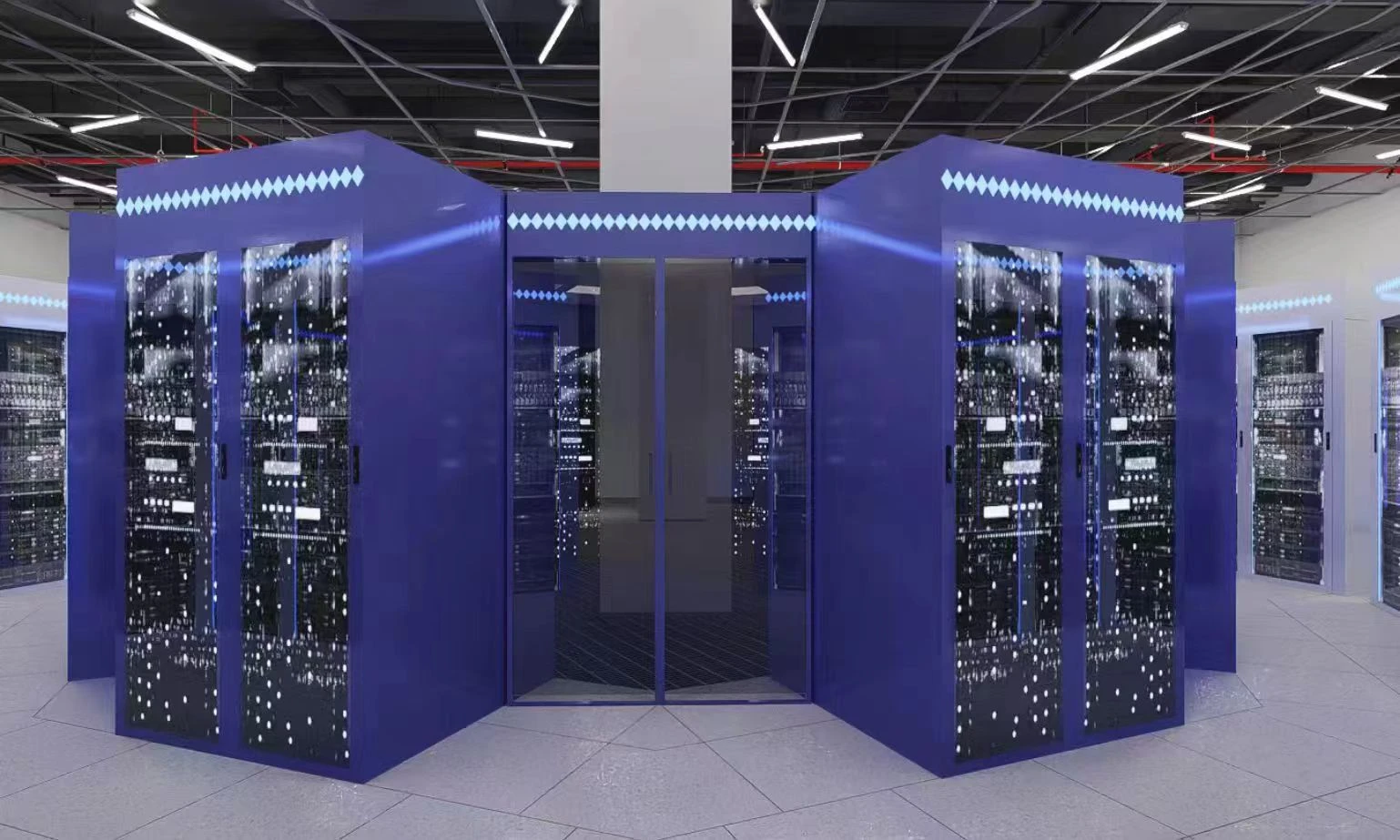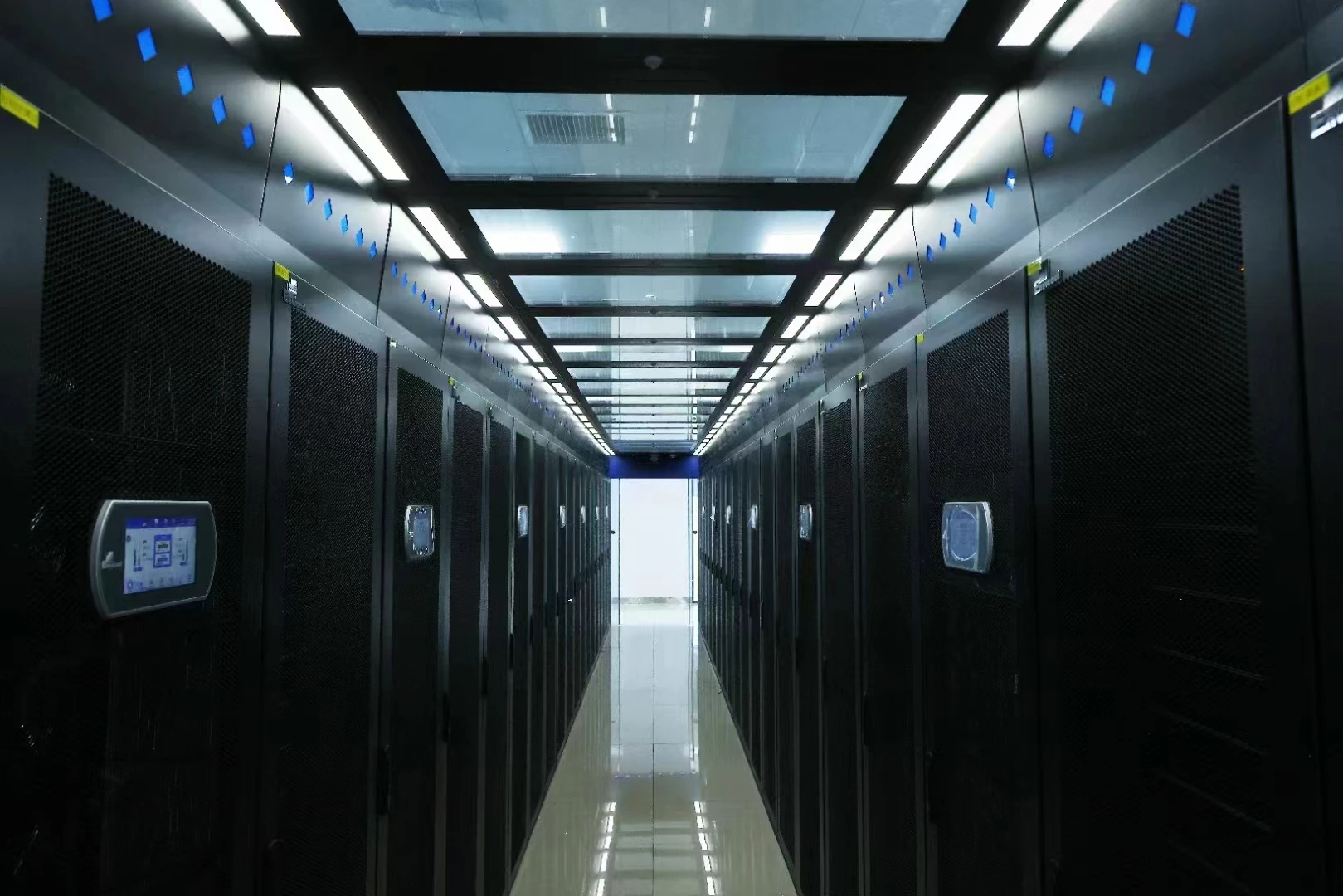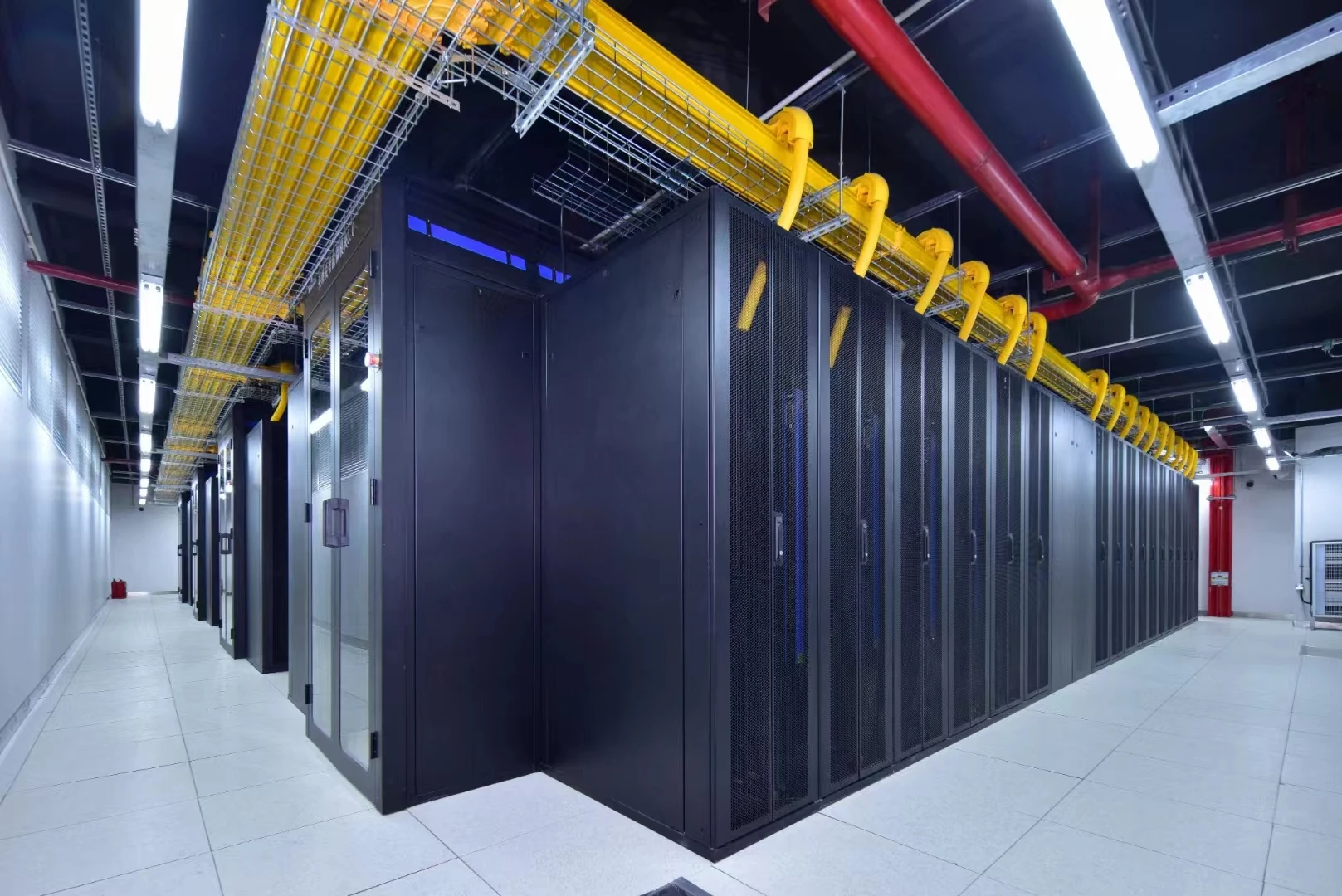
Ago . 09, 2025 01:20 Back to list
Energy Management System: Monitor, Control, Optimize Costs
In today's rapidly evolving industrial and commercial landscape, the imperative to optimize energy consumption has never been more critical. Businesses face rising energy costs, increasing regulatory pressures, and a growing global commitment to environmental sustainability. This confluence of factors has propelled the energy management system (EMS) from a niche solution to a foundational pillar of modern infrastructure. An EMS is not merely about monitoring; it's a comprehensive framework that integrates hardware, software, and services to collect, analyze, and act upon energy data, driving significant operational savings and fostering a greener footprint.
Industry Trends and the Evolution of Energy Management
The energy management system market is experiencing unprecedented growth, driven by technological advancements and global energy policies. According to a report by Grand View Research, the global EMS market size was valued at USD 23.6 billion in 2022 and is projected to grow at a compound annual growth rate (CAGR) of 14.5% from 2023 to 2030. This growth is fueled by several key trends:
- Digitalization and IoT Integration: The proliferation of Internet of Things (IoT) sensors and smart meters allows for real-time, granular data collection from virtually every energy-consuming asset. This data forms the bedrock of modern EMS, enabling precise monitoring and control.
- Artificial Intelligence and Machine Learning (AI/ML): AI and ML algorithms are transforming EMS by enabling predictive analytics, anomaly detection, and automated optimization. These systems can learn energy consumption patterns, forecast future demand, and identify opportunities for efficiency gains that human analysis might miss.
- Renewable Energy Integration: As more businesses adopt solar, wind, and other renewable sources, EMS plays a crucial role in managing the intermittency of these sources, integrating them seamlessly into the existing grid, and optimizing their dispatch for maximum efficiency.
- Regulatory Compliance and ESG Goals: Governments worldwide are implementing stricter energy efficiency standards and carbon emission reduction targets. An advanced energy management system helps organizations not only comply with these regulations but also achieve their Environmental, Social, and Governance (ESG) objectives, enhancing their brand reputation and attracting responsible investors.
- Edge Computing for Real-time Control: For critical applications like data centers and industrial automation, edge computing brings computational power closer to the data source, enabling faster decision-making and real-time control, which is vital for sophisticated energy control systems.
Technical Parameters and Capabilities of Modern Energy Management Systems
A robust energy management system is characterized by its ability to collect diverse data, perform complex analytics, and provide actionable insights. Key technical parameters include:
- Data Acquisition: Supports various protocols (Modbus RTU/TCP, BACnet IP/MSTP, SNMP, OPC UA, MQTT) for seamless integration with meters, sensors, PLCs, and other building management systems (BMS). Data logging frequency can range from seconds to minutes, depending on the application.
- Monitoring and Visualization: Real-time dashboards, historical trending, customizable reports, and alarms for deviations from set parameters. Granularity often extends to individual circuits or equipment.
- Analysis Capabilities: Power Quality Analysis (voltage, current, power factor, harmonics), Demand-Side Management (peak demand shedding, load shifting), Cost Allocation (departmental billing), Baselines and Benchmarking, Measurement and Verification (M&V) of energy savings.
- Control and Optimization: Ability to remotely control equipment (HVAC, lighting, machinery), implement scheduling, and execute automated responses based on predefined rules or AI-driven recommendations. This is where an energy control system truly shines.
- Scalability and Integration: Designed to grow with organizational needs, supporting thousands of data points and capable of integrating with enterprise resource planning (ERP) systems, CMMS, and cloud platforms.
- Security: Robust cybersecurity measures including encryption, user authentication, access control, and compliance with industry standards like ISO 27001.
Typical EMS Parameter Table
| Parameter | Typical Range/Specification | Benefit |
|---|---|---|
| Supported Protocols | Modbus RTU/TCP, BACnet IP/MSTP, SNMP, OPC UA, MQTT, REST APIs | Ensures broad compatibility with existing infrastructure. |
| Data Logging Frequency | 1 second to 15 minutes (configurable) | Enables granular analysis and real-time anomaly detection. |
| Power Monitoring Accuracy | Class 0.5S (or better) for revenue metering | Provides precise energy consumption and cost data. |
| Integration Capabilities | APIs for ERP, CMMS, SCADA, Cloud Platforms | Facilitates holistic operational and financial insights. |
| User Interface | Web-based, mobile-responsive dashboards | Accessible insights from anywhere, anytime. |
| Scalability | Supports 100 to 10,000+ data points | Adapts to growing facility needs without system overhaul. |
| Reporting Features | Customizable, automated reports (daily, weekly, monthly, annual) | Simplifies compliance and performance tracking. |
| Cybersecurity Standards | ISO 27001, IEC 62443 compliance | Protects sensitive energy data from cyber threats. |

Application Scenarios of Energy Management Systems
The versatility of an energy management system allows it to be deployed across a diverse range of sectors, each benefiting from its specific capabilities:
- Industrial Manufacturing: Factories utilize EMS to monitor and control energy consumption of heavy machinery, production lines, and industrial HVAC systems. This leads to reduced operational costs, optimized production schedules, and improved equipment longevity through predictive maintenance enabled by energy signatures. For instance, in a large automotive plant, an EMS can pinpoint energy waste from idle machinery or inefficient motor operations, leading to substantial savings.
- Commercial Buildings and Campuses: Office buildings, shopping malls, universities, and hospitals leverage EMS for intelligent control of lighting, HVAC, elevators, and other building services. An effective energy monitoring and management system can automatically adjust settings based on occupancy, time of day, and external weather conditions, significantly lowering utility bills and improving occupant comfort.
- Data Centers and IT Infrastructure: This is a particularly critical application. Data centers are massive energy consumers, with power often representing the largest operational cost. An EMS in a data center monitors Power Usage Effectiveness (PUE), optimizes cooling strategies (e.g., hot/cold aisle containment, CRAC/CRAH unit control), tracks power distribution unit (PDU) loads, and manages uninterruptible power supply (UPS) systems. Our Micro module computer room product (further details below) is designed to integrate seamlessly with such advanced systems, creating an unparalleled environment for energy-efficient IT operations.
- Telecommunications: Telecom base stations and switching centers require constant power and cooling. EMS helps manage these demands, especially in remote or off-grid locations where battery storage and renewable energy sources are integrated.
- Smart Cities and Public Infrastructure: EMS extends to city-wide applications, managing street lighting, water treatment plants, public transportation systems, and municipal buildings, contributing to overall urban sustainability.
Technical Advantages of a Comprehensive Energy Management System
Investing in an advanced energy management system offers multifaceted advantages:
- Significant Cost Reduction: By identifying and eliminating energy waste, optimizing demand, and improving power factor, EMS directly reduces electricity bills, often by 10-30% or more, depending on the initial state of efficiency.
- Enhanced Operational Efficiency: Real-time monitoring and automated controls streamline operations, reduce manual interventions, and ensure equipment operates at optimal performance. Predictive maintenance, based on energy signatures, minimizes unexpected downtime.
- Reduced Carbon Footprint: Lower energy consumption directly translates to reduced greenhouse gas emissions, aligning with corporate sustainability goals and contributing to environmental protection.
- Improved Reliability and Uptime: By continuously monitoring power quality and equipment health, EMS can detect potential issues before they lead to failures, enabling proactive maintenance and ensuring higher system reliability, particularly vital in environments like data centers.
- Regulatory Compliance and Reporting: EMS automates data collection and report generation for energy audits, carbon emissions reporting, and compliance with various industry standards and government regulations (e.g., ISO 50001 for Energy Management Systems).
- Data-Driven Decision Making: Provides actionable insights from vast amounts of energy data, empowering facility managers and executives to make informed strategic decisions regarding energy investments and operational changes.
The Role of Micro Module Computer Rooms in Optimized Energy Management
Our product, the Micro module computer room, represents a cutting-edge solution for deploying IT infrastructure with integrated energy management system capabilities. These modular data centers are designed for rapid deployment, high efficiency, and robust protection, making them an ideal environment for critical applications requiring precise energy control.
Detailed Manufacturing Process of a Micro Module Computer Room
The creation of a high-performance Micro Module Computer Room involves a meticulously engineered and quality-controlled manufacturing process, ensuring durability, efficiency, and seamless integration with sophisticated energy control systems. While an EMS itself is largely software and integrated sensors, the physical infrastructure it monitors and controls, like our Micro Module Computer Room, requires stringent manufacturing standards.
1. Design and Engineering:
- Conceptualization & Requirement Analysis: Based on client needs (IT load, space, redundancy), initial designs are drafted.
- CAD Modeling & Simulation: Detailed 3D CAD models are created. Computational Fluid Dynamics (CFD) simulations are run to optimize airflow, cooling efficiency, and identify potential hot spots within the module. This is crucial for maximizing the effectiveness of the integrated energy monitoring and management system. Structural analysis ensures integrity and load-bearing capacity.
- Electrical & Mechanical Design: Layouts for power distribution (PDUs, UPS), cooling units (CRAC/CRAH), fire suppression, cabling, and environmental monitoring points are finalized, all with considerations for EMS sensor placement and data routing.
2. Material Selection:
- Structural Steel: High-grade cold-rolled steel or galvanized steel is used for the main framework and panels, providing excellent strength and corrosion resistance. Compliance with standards like ASTM A653 for galvanized steel ensures long-term durability, crucial for a long service life.
- Insulation: High-density, fire-rated insulation materials (e.g., rock wool, polyurethane foam) are used for walls, ceiling, and floor to maintain thermal stability and enhance energy efficiency, directly impacting the cooling load an EMS needs to manage.
- Finishing Materials: Anti-static raised floor systems, fire-resistant decorative panels, and durable powder coatings for interior and exterior surfaces ensure both functionality and aesthetic appeal.
3. Precision Fabrication:
- CNC Cutting & Bending: Steel sheets are cut and bent with high precision using Computer Numerical Control (CNC) machines. This ensures exact dimensions and reduces material waste, critical for the modular assembly.
- Welding: Robotic and skilled manual welding techniques (e.g., MIG, TIG) are employed to create robust structural frames. Weld inspections are performed to ensure strength and integrity, adhering to standards like AWS D1.1.
- Surface Treatment: Components undergo thorough cleaning and pre-treatment processes. This is followed by durable powder coating or galvanization to provide superior protection against corrosion, scratches, and wear, extending the product's lifespan even in harsh environments.
4. Component Integration & Assembly:
- Modular Assembly: The fabricated structural components are assembled into the modular framework.
- Power Infrastructure Integration: Pre-wired power distribution units (PDUs), UPS systems, and battery racks are installed. All cabling is meticulously routed and terminated according to electrical safety standards (e.g., ANSI/NFPA 70 - National Electrical Code).
- Cooling System Installation: Precision cooling units (CRAC/CRAH) are integrated, along with piping for refrigerants or chilled water, designed for optimal airflow within the contained environment.
- Fire Suppression System: Environmentally friendly fire suppression systems (e.g., FM-200, Novec 1230) and smoke detectors are installed and connected.
- Environmental Monitoring & EMS Sensors: Critical sensors for temperature, humidity, air pressure, water leakage, and power consumption (for the energy management system) are strategically placed and pre-wired to a central monitoring unit or BMS gateway.
- IT Racks & Cabling: Server racks and structured cabling systems are installed, ready for IT equipment deployment.
5. Testing and Quality Control:
- Electrical Safety Testing: Comprehensive testing for insulation resistance, grounding, and continuity is performed to ensure compliance with relevant electrical safety standards (e.g., IEC 60364).
- Thermal Performance Testing: The cooling system's performance is rigorously tested under simulated IT loads to verify its capacity to maintain optimal temperatures and humidity within the module, crucial for the efficacy of the energy monitoring and management system.
- Airflow and Containment Testing: Specialized tools are used to verify proper airflow patterns and ensure effective hot/cold aisle containment, which directly contributes to the module's PUE (Power Usage Effectiveness).
- System Integration Testing: All integrated systems (power, cooling, fire, security, and especially the energy management system's sensors and controls) are tested for seamless operation and communication.
- Factory Acceptance Test (FAT): Clients often participate in FATs at our facility to verify that the module meets all specified requirements before shipment.
- Quality Management Systems: Our manufacturing processes adhere strictly to ISO 9001 quality management standards, ensuring consistent product quality and reliability.
6. Packaging and Shipment:
- Modules are carefully packaged to prevent damage during transit, often prepared for international shipping standards.
Product Lifespan & Applicable Industries: A Micro Module Computer Room, manufactured with such precision and high-quality materials, boasts a design lifespan of 15-20 years or more, requiring minimal maintenance. Its robust construction and integrated EMS capabilities make it ideal for demanding environments in data centers, telecommunications, edge computing, oil & gas (for remote monitoring), smart city infrastructure, and critical industrial applications requiring localized, secure IT support.

[Placeholder for Manufacturing Process Diagram/Video Link]
(In a live web environment, an interactive diagram showing the flow from design to testing with clickable nodes for details, or a short video showcasing the manufacturing facility, would be embedded here.)
Manufacturer Comparison: EMS & Micro Module Solutions
When selecting an energy management system or a Micro Module Computer Room, it’s crucial to evaluate providers based on their technical capabilities, industry experience, and support services. While many offer basic monitoring, advanced solutions differentiate themselves by their integration depth, analytics power, and modularity. Below is a simplified comparison:
| Feature/Provider | Traditional EMS Provider (e.g., Siemens, Schneider Electric) | Niche Micro Module Provider (e.g., Smaller local vendors) | ACDC BESS (Micro Module Computer Room with Integrated EMS Support) |
|---|---|---|---|
| Core Focus | Broad energy management for buildings/industries. | Modular data center shells. | Integrated, high-efficiency Micro Module Computer Rooms optimized for critical IT infrastructure with comprehensive EMS integration points. |
| EMS Analytics Depth | Very high, advanced AI/ML capabilities, enterprise-wide. | Basic monitoring, often relies on third-party EMS. | Robust monitoring, PUE optimization, pre-integrated sensor network for seamless data collection. Supports advanced third-party EMS integration. |
| Modularity & Scalability | Software highly scalable, hardware depends on specific components. | Highly modular physical structure. | Exceptional modularity for physical expansion (power, cooling, racks) and seamless integration with scaling EMS. |
| Deployment Speed | Software deployment is fast; hardware integration varies. | Fast physical deployment. | Significantly faster due to pre-fabricated, pre-tested, and pre-integrated nature (plug-and-play). |
| Environmental Control | Software-driven control of existing HVAC. | Physical containment, but cooling efficiency depends on integration. | Superior due to optimized airflow, precision cooling, and intelligent hot/cold aisle containment, monitored and controlled by integrated EMS data. |
| Application Suitability | Large commercial/industrial, distributed sites. | Edge computing, small data centers, disaster recovery. | Edge computing, remote offices, branch offices, industrial automation, rapid expansion of data center capacity, mission-critical applications where energy efficiency and rapid deployment are paramount. |
| Certifications/Standards | Often ISO 50001, various software certifications. | May have ISO 9001 for manufacturing. | ISO 9001 for manufacturing, adherence to TIA-942, Uptime Institute tiering guidelines, IEC, ANSI electrical standards. Emphasis on PUE optimization. |
| Service & Support | Extensive global service network. | Varies, often local or regional. | Comprehensive project management, global installation support, and responsive post-sales technical assistance, ensuring the longevity and performance of both the physical infrastructure and its EMS capabilities. |
Customization Solutions for Unique Energy Management Needs
At ACDC BESS, we understand that no two deployments are identical. Our Micro Module Computer Rooms and their integrated energy management system capabilities are highly customizable to meet specific client requirements, ensuring optimal performance and maximum energy savings. Key customization options include:
- Cooling System Variations: Selection between different types of precision cooling units (e.g., in-row cooling, direct expansion, chilled water, liquid cooling for high-density racks) to match specific IT load densities and environmental conditions.
- Power Configurations: Tailored UPS systems, power distribution units (PDUs) with granular metering capabilities, redundant power paths (2N, N+1), and integration with renewable energy sources or battery energy storage systems (BESS) for enhanced resilience and peak shaving.
- Security Features: Advanced physical security options such as biometric access control, video surveillance, environmental sensors (water leak detection, smoke detection), and integration with existing building security systems.
- Rack & Cabling Optimization: Customizable rack sizes, types (e.g., open-frame, enclosed), and high-density cabling solutions to optimize space utilization and airflow.
- Monitoring & Control Integration: Seamless integration with existing Building Management Systems (BMS), SCADA systems, or enterprise-level energy management system platforms through standard protocols. This ensures centralized control and data visibility across an entire facility or campus.
- Modular Expansion Capabilities: Designed for future growth, our modules can be easily expanded by adding more units, allowing for scalable IT infrastructure deployment without significant upfront investment.
- Environmental Hardening: Options for increased ingress protection (IP ratings) for deployment in harsh environments (e.g., dusty industrial settings, outdoor installations) and enhanced seismic bracing.

Application Cases and Success Stories
The practical benefits of deploying a sophisticated energy management system within a Micro Module Computer Room are best illustrated through real-world applications:
- Case Study 1: Financial Institution Data Center Expansion
A leading financial institution needed to rapidly expand its data center capacity while minimizing energy consumption and maintaining strict security. By deploying several ACDC BESS Micro Module Computer Rooms with integrated energy monitoring and management system capabilities, they achieved a PUE of 1.3, significantly lower than their legacy data center's 1.8 PUE. The rapid deployment allowed them to bring new services online in half the time compared to traditional construction. The granular energy data provided by the EMS enabled them to dynamically adjust cooling and power, leading to a 25% reduction in energy costs for the new modules within the first year. "The modular design combined with advanced energy intelligence allowed us to scale efficiently and sustainably," commented their IT Director.
- Case Study 2: Remote Industrial Site Edge Computing
A global mining company required a rugged, energy-efficient edge data center for real-time processing of sensor data at a remote extraction site. Our Micro Module Computer Room, equipped with an enhanced cooling system and robust energy management system, was deployed. The EMS not only monitored power consumption of the IT equipment and cooling units but also integrated with the site's generator and solar panels, optimizing energy dispatch and reducing reliance on costly diesel fuel. The self-contained, secure environment, coupled with the system’s ability to operate autonomously with remote monitoring, proved critical for their operations. The energy savings from optimized power use and reduced generator run-time paid for the system within three years.
- Case Study 3: University Research Lab
A university sought to create a secure and energy-efficient environment for sensitive research computing without building a full-scale data center. An ACDC BESS Micro Module Computer Room offered the perfect solution. The integrated energy control system allowed the university to precisely track energy usage down to individual research projects, enabling accurate cost allocation and promoting energy-conscious behavior among researchers. The quiet operation and localized cooling also minimized impact on adjacent lab spaces. They reported a 15% reduction in overall departmental energy expenditure attributed to the Micro Module's efficiency and the insights provided by its EMS.
Frequently Asked Questions (FAQ) about Energy Management Systems and Micro Module Computer Rooms
- Q1: What are the key components of an energy management system?
- A: A typical energy management system comprises energy meters and sensors (for current, voltage, temperature, humidity, etc.), data loggers or gateways to collect data, communication networks (Ethernet, Wi-Fi, Modbus, BACnet) to transmit data, and specialized software for data storage, analysis, visualization, and control. Advanced systems often include AI/ML modules for predictive analytics.
- Q2: How does an energy management system contribute to PUE reduction in data centers?
- A: An energy management system significantly reduces PUE (Power Usage Effectiveness) by providing granular visibility into energy consumption of IT equipment versus cooling and other infrastructure. It enables optimization of cooling setpoints, management of airflow (e.g., hot/cold aisle containment), identification of zombie servers, and load balancing, ensuring that non-IT energy overhead is minimized. Our Micro Module Computer Rooms are designed to facilitate this optimization through integrated sensor networks and efficient layouts.
- Q3: What are the typical communication protocols used in energy control systems?
- A: Common protocols include Modbus (RTU and TCP/IP), BACnet (IP and MSTP), SNMP (for network devices), OPC UA (for industrial automation), and newer IoT protocols like MQTT for cloud-based integration. The choice depends on the existing infrastructure and desired level of interoperability.
- Q4: What are the advantages of deploying an energy monitoring and management system within a Micro Module Computer Room?
- A: Deploying an energy monitoring and management system within a Micro Module Computer Room offers unparalleled advantages: enhanced energy efficiency due to contained cooling and optimized airflow, rapid deployment, reduced construction costs, superior physical security, and a dedicated, pre-engineered environment that ensures optimal performance and longevity of both IT and EMS components. It creates a highly controlled ecosystem for energy optimization.
- Q5: What materials are typically used in the construction of a Micro Module Computer Room to ensure durability and safety?
- A: Our Micro Module Computer Rooms primarily use high-grade cold-rolled or galvanized steel for the structural framework and panels, ensuring excellent strength and corrosion resistance (conforming to ASTM standards). Fire-rated insulation materials (e.g., rock wool) are used for thermal and fire protection. All materials are selected for their durability, safety, and long-term performance, making them suitable for diverse industrial and commercial environments.
- Q6: What quality control standards does ACDC BESS adhere to for its products?
- A: ACDC BESS adheres to stringent quality control standards, including ISO 9001 for quality management systems. Our manufacturing processes involve precision CNC machining, robotic welding, and rigorous multi-stage testing, including Factory Acceptance Tests (FAT), electrical safety checks (per IEC/ANSI standards), and thermal performance validation. This ensures every Micro Module Computer Room meets the highest benchmarks for reliability, safety, and efficiency.
- Q7: What is the typical lifespan of a Micro Module Computer Room and its integrated EMS components?
- A: With proper maintenance and given our robust manufacturing processes and material selection, a Micro Module Computer Room is designed for a service life of 15-20 years or more. Key integrated EMS components (sensors, meters, controllers) typically have lifespans ranging from 5-15 years, and are designed for modular replacement to ensure continuous optimal performance of the overall energy management system.
Trustworthiness and Customer Support
ACDC BESS is committed to building lasting relationships based on trust and reliability. Our dedication to the Google (Expertise, Experience, Authoritativeness, Trustworthiness) standard is reflected in every aspect of our operations:
- Expertise: Our team comprises seasoned engineers, certified technicians, and project managers with deep domain knowledge in data center infrastructure, power electronics, and energy management system design. We consistently invest in R&D to stay at the forefront of technological innovation.
- Experience: With years of successful deployments across various industries globally, we possess extensive practical experience. Our case studies and client testimonials (as simulated above) underscore our proven track record in delivering high-performance, energy-efficient solutions.
- Authoritativeness: We adhere to international industry standards such as ISO 9001 for quality management and relevant IEC, ANSI, and TIA standards for data center infrastructure. Our collaborations with leading technology partners further solidify our authoritative standing in the market. We have successfully completed projects for clients requiring adherence to specific regional and national electrical codes, demonstrating our adaptability and compliance capabilities.
- Trustworthiness:
- Transparent Delivery Cycle: Upon project initiation, we provide a clear and detailed project timeline, from design and manufacturing to testing, shipment, and on-site deployment. Typical lead times for standard Micro Module Computer Rooms range from 8-12 weeks, with customization influencing the specific schedule.
- Comprehensive Warranty: All ACDC BESS Micro Module Computer Rooms come with a standard 3-year warranty on structural components and 1-year warranty on integrated active components (e.g., cooling units, UPS modules). Extended warranty options are available. Our commitment to quality ensures minimal issues during the warranty period and beyond.
- Dedicated Customer Support: Our global support team offers 24/7 technical assistance, remote monitoring, and on-site service options. We provide comprehensive training for client staff on system operation and maintenance, ensuring they can fully leverage the capabilities of their energy management system and Micro Module Computer Room.
Our commitment extends beyond product delivery to providing comprehensive post-sales support, ensuring your energy management system and Micro Module Computer Room operate at peak efficiency throughout their lifespan. This includes regular software updates, preventative maintenance recommendations, and responsive troubleshooting.
Conclusion and Future Outlook
The journey towards a more energy-efficient and sustainable future is no longer an option but a necessity. The advanced energy management system, particularly when integrated within high-performance infrastructures like our Micro Module Computer Rooms, represents the pinnacle of this evolution. By offering granular monitoring, intelligent control, and robust analytics, these systems empower organizations to significantly reduce operational costs, minimize environmental impact, and enhance operational resilience.
As the world moves towards greater digitalization and decentralization, the demand for modular, efficient, and intelligent IT infrastructure will only intensify. ACDC BESS is at the forefront of this transformation, providing solutions that are not only technologically superior but also economically viable and environmentally responsible. We invite you to explore how our Micro Module Computer Rooms and their inherent energy control systems can revolutionize your approach to energy management.
For further insights into the latest advancements in energy management and data center efficiency, we recommend consulting authoritative industry resources:
- Uptime Institute: A leading global authority on data center performance and efficiency standards. Their research on PUE and operational sustainability is invaluable. https://uptimeinstitute.com/resources
- ASHRAE (American Society of Heating, Refrigerating and Air-Conditioning Engineers): Provides widely recognized standards and guidelines for HVAC and refrigeration systems, including critical publications on data center thermal guidelines. https://www.ashrae.org/technical-resources/standards-and-guidelines
- Journal of Energy Management: An academic journal publishing peer-reviewed research on all aspects of energy management. https://www.journals.elsevier.com/energy-management
This is the last article
-
Energy Management System: Monitor, Control, Optimize Costs
NewsAug.09,2025
-
Advanced Energy Storage Systems (ESS) - Reliable & Scalable
NewsAug.08,2025
-
Smart Energy Management System: Optimize Costs & Efficiency
NewsAug.07,2025
-
Reliable Energy Storage System | Advanced ESS Solutions
NewsAug.06,2025
-
AI-Optimized Energy Storage Cabinet | Efficiency & Safety
NewsAug.04,2025
-
High-Performance Energy Storage System for Reliable Power Solutions
NewsJul.30,2025























